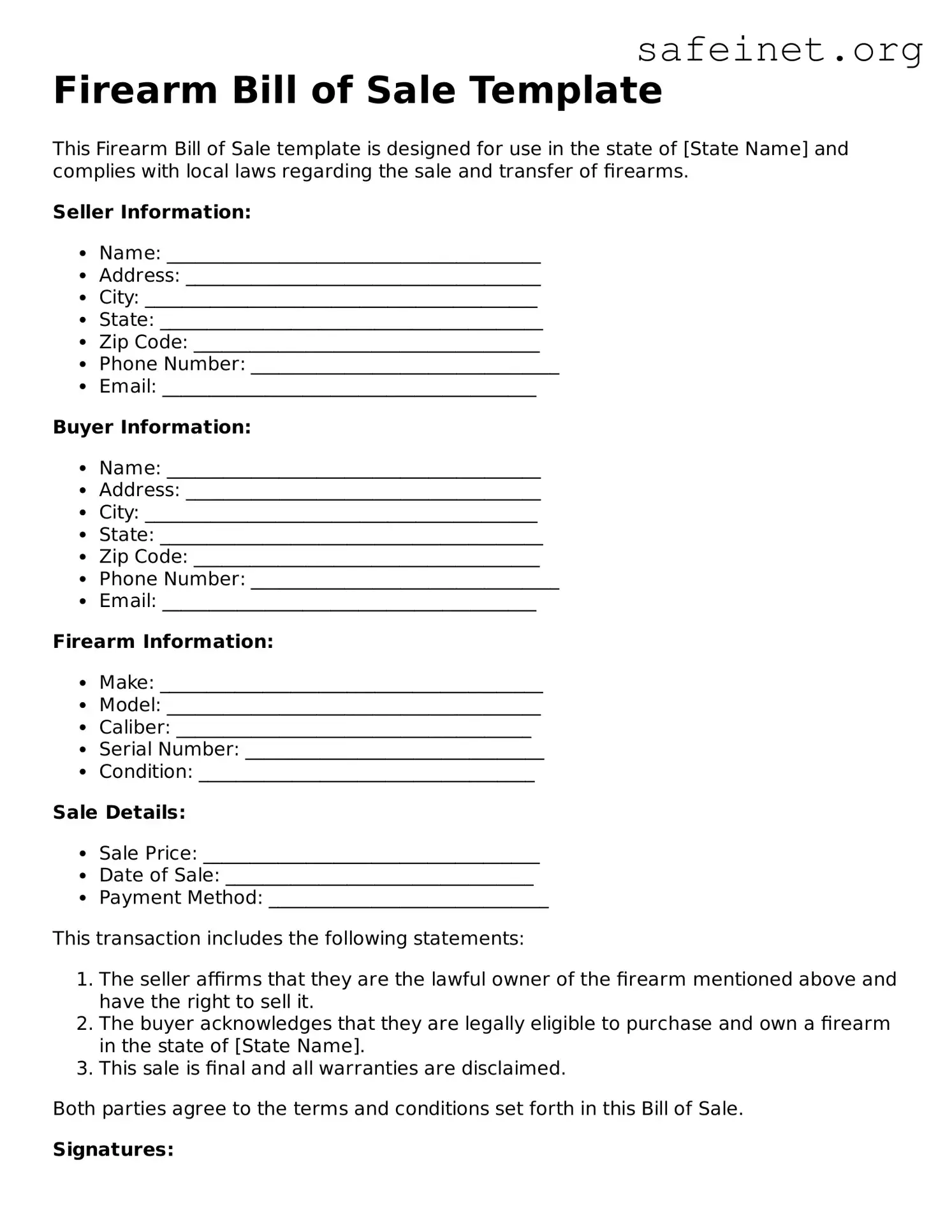The Firearm Bill of Sale form shares similarities with the Vehicle Bill of Sale. Both documents serve as a legal record of a transaction between a seller and a buyer. They typically include crucial details such as the names and addresses of the parties involved, along with descriptions of the items being sold. For vehicles, this includes information like the make, model, year, and Vehicle Identification Number (VIN). In both scenarios, the buyer obtains proof of ownership, while the seller documents the transfer of their assets.
Another document that resembles the Firearm Bill of Sale is the Personal Property Bill of Sale. This document is used for various types of personal property, including appliances or collectibles, and includes similar information about the buyer and seller, along with a detailed description of the item being sold. Both forms help protect the interests of each party and provide a record in the event of any disputes. Additionally, they serve as a means of proving ownership and can be important for taxes or insurance purposes.
The Lease Agreement parallels the Firearm Bill of Sale in that it creates a binding contract between two parties for a specified period. This document outlines the conditions of the lease, including rental terms, responsibilities for maintenance, and other critical details. Just as the Firearm Bill of Sale transfers ownership, a lease agreement transfers the right to use a property. Both documents require signatures from both parties to signify acceptance of the terms.
Similar to the Firearm Bill of Sale, the Rental Agreement provides a clear understanding between landlords and tenants. A Rental Agreement outlines the expectations, rules, and responsibilities during the rental period. Both documents emphasize transparency and help prevent misunderstandings that can arise later on. Making sure both parties agree to the terms is essential, much like in a firearm sale, where all parties must agree to the transfer of ownership.
Service Agreements also resemble the Firearm Bill of Sale, though they pertain to services rather than property. These documents define the scope of work, payment terms, and responsibilities of both the service provider and client. Just as the Bill of Sale ensures the buyer understands what they are acquiring, a Service Agreement clarifies what services will be provided, benefiting both parties by establishing clear expectations.
The Sales Contract is another document similar to the Firearm Bill of Sale, primarily used for larger transactions like real estate or high-value goods. This contract lays out the terms of sale, including price, payment plan, and property description. Both documents serve to formalize an agreement and protect both the buyer and the seller's interests. They create a safeguard to ensure that all parties fulfill their responsibilities during the transaction.
Gift Declarations are akin to the Firearm Bill of Sale in that they document the transfer of property without exchange for money. While the intent may differ, both documents provide proof of transfer, which can be important for inheritance, tax obligations, or documenting ownership. A Gift Declaration includes details about the item and the parties involved, similar to how a Bill of Sale captures essential transaction information.
Finally, the Warranty Deed functions similarly to the Firearm Bill of Sale in real estate transactions. This document guarantees that a seller has a clear title to the property being sold and that there are no liens or claims against it. Much like a Bill of Sale confirms that a firearm is being legally sold and owned, the Warranty Deed ensures that the transfer of property ownership is legitimate and secure for the buyer.
